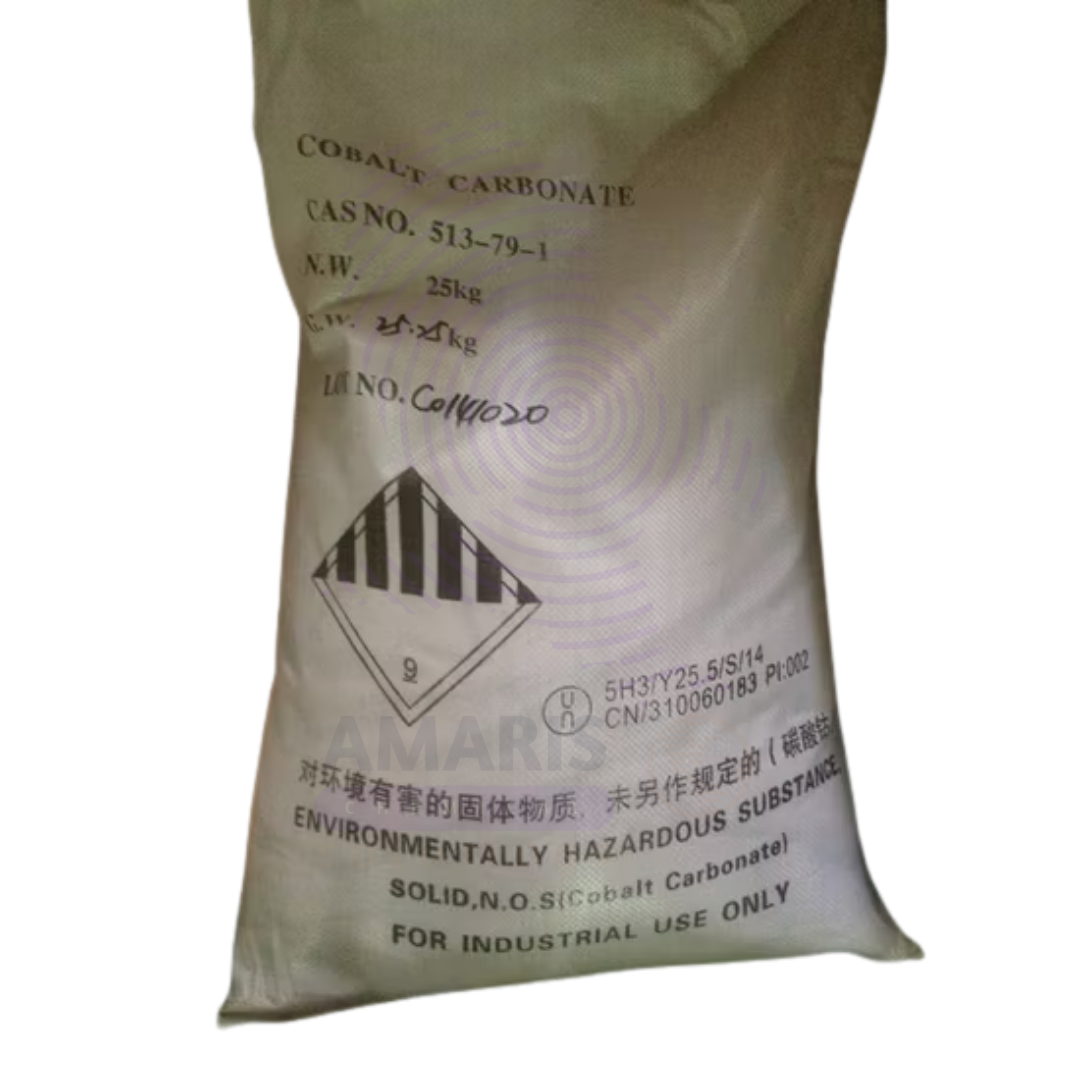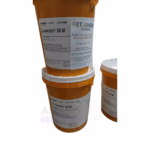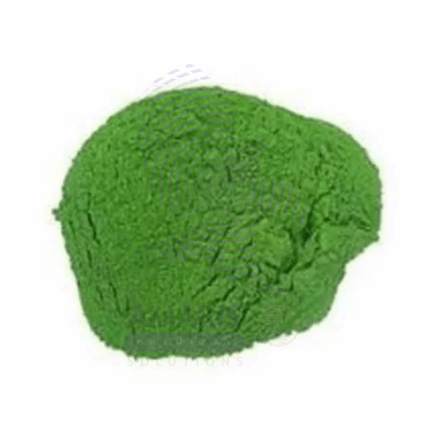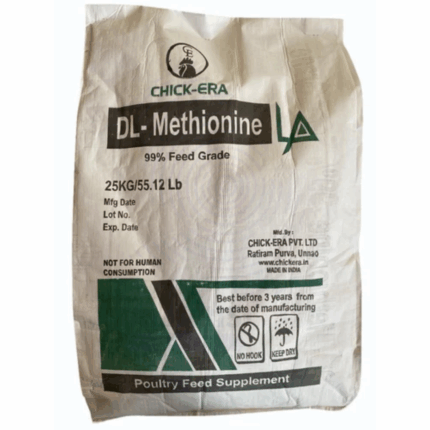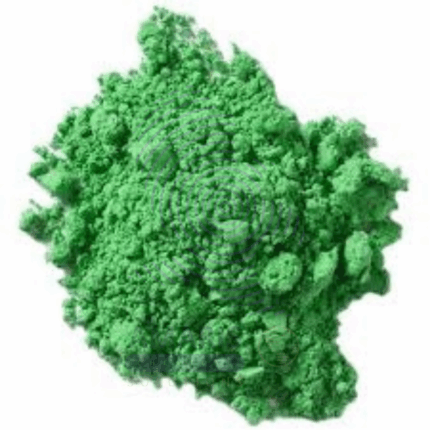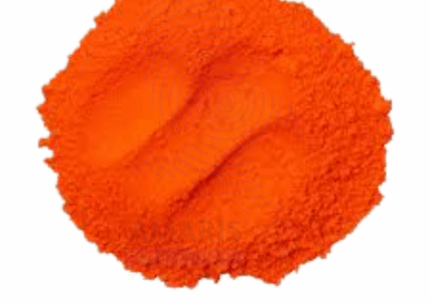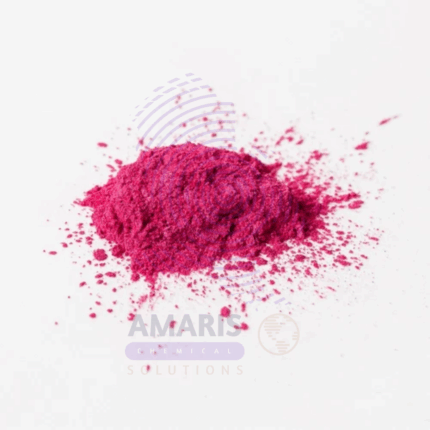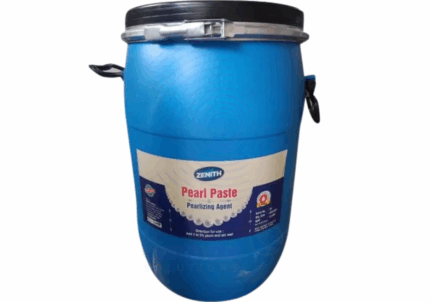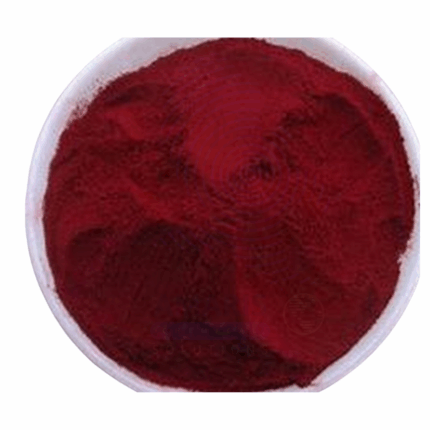Cobalt Carbonate
Whatsapp Order
Cobalt Carbonate is a rose-red to purplish powder with a metal content of approximately 46% cobalt by weight. It is an inorganic compound primarily used as a source of cobalt, either as a raw material in chemical synthesis or as a micronutrient in various formulations. It is slightly soluble in water and decomposes upon heating, releasing carbon dioxide and leaving cobalt oxide (CoO). Cobalt Carbonate is used in ceramics, catalysts, animal nutrition, batteries, and metal surface treatments. Its controlled release of cobalt makes it useful in both industrial and biological applications.
Description
Table of Contents
Toggle
Cobalt Carbonate
Primary Uses
- Animal Nutrition (Feed Grade)
- Used as a trace mineral supplement in animal feeds, especially for ruminants (cattle, sheep).
- Provides cobalt, an essential component of vitamin B12 synthesis by rumen microbes.
- Helps improve digestion and nutrient absorption, especially in livestock grazing on cobalt-deficient soils.
- Typically added to mineral premixes or feed blocks.
- Catalysts & Chemical Synthesis
- Intermediate for the production of cobalt-based catalysts used in:
- Fischer–Tropsch synthesis
- Hydrodesulfurization
- Oxidation and hydrogenation reactions
- Converts to cobalt oxide (CoO or Co₃O₄) upon heating, which is used in various catalytic processes.
- Pigments & Ceramics
- Used in the production of cobalt blue and other ceramic pigments.
- Provides vivid color and thermal stability in glazes, enamels, and frits.
- Acts as a colorant in glass manufacturing and pottery.
- Battery Materials
- Acts as a precursor to cobalt salts and oxides used in lithium-ion battery cathodes (e.g., LiCoO₂).
- Used in laboratory research and development of rechargeable battery technologies.
Secondary Uses
- Electroplating & Surface Treatment
- Source of cobalt ions in electroplating baths for producing hard, wear-resistant, and corrosion-resistant surfaces.
- Used in passivation and conversion coatings for metal finishing industries.
- Fertilizers (Micronutrient Source)
- Sometimes added to specialty fertilizers for soil enrichment where cobalt deficiency affects plant-microbe interactions.
- Promotes nitrogen fixation in leguminous crops by supporting Rhizobium bacteria.
- Laboratory Reagent
- Used in analytical chemistry for cobalt ion preparation and related reactions.
- Reacts with acids to form various cobalt salts (e.g., cobalt chloride, sulfate, nitrate).
- Glass Manufacturing
- Used to color glass blue or pink, depending on the formulation and furnace conditions.
- Provides oxidation resistance and heat stability in specialty glass products.
KEY PRODUCT FEATURES
1. Basic Identification Attributes
- Chemical Name (IUPAC): Cobalt(II) carbonate
- Common/Trade Name: Cobalt Carbonate 46%
- CAS Number: 513-79-1
- HS Code: 2836.99.00
- Molecular Formula: CoCO₃
- Molecular Weight: 118.94 g/mol
- Synonyms:
- Cobaltous carbonate
- Co(II) carbonate
- Carbonic acid, cobalt(2+) salt
2. Physical & Chemical Properties
- Physical State: Powder
- Color & Odor: Rose-red to purple; odorless
- Solubility:
- Slightly soluble in water
- Soluble in acids (releasing CO₂)
- Density: ~3.7 g/cm³
- Melting Point: Decomposes before melting (~300°C)
- Decomposition: Yields CoO and CO₂ upon heating
- Cobalt Content: ~46%
- pH (in water): Slightly alkaline
- Stability: Stable under normal storage; sensitive to strong acids
3. Safety & Hazard Attributes
- Hazard Class (GHS):
- Acute toxicity (oral, inhalation)
- Skin sensitizer
- Carcinogen (Category 2)
- Environmental hazard (Aquatic chronic)
- NFPA Ratings:
- Health: 2
- Flammability: 0
- Reactivity: 0
- Exposure Limits:
- OSHA PEL (as cobalt): 0.1 mg/m³ (TWA)
- ACGIH TLV: 0.02 mg/m³ (TWA, inhalable)
- Toxicity: Harmful if swallowed or inhaled; may cause allergic skin or respiratory reactions
- Reactivity: Reacts with acids to release CO₂
4. Storage & Handling Attributes
- Storage Conditions: Store in a cool, dry, well-ventilated area away from acids and moisture
- Container Type: Fiber drums, HDPE containers with liners
- Shelf Life: Up to 2 years under proper conditions
- Special Handling:
- Avoid dust formation
- Use proper ventilation
- Avoid contact with skin and eyes
5. Regulatory & Compliance Attributes
- FDA Status: Not approved for direct human consumption
- REACH Status: Registered under EU regulations
- RoHS/ELV: Subject to restrictions depending on application
- Transportation: Not classified as a dangerous good for transport (in powder form)
- Waste Disposal: Dispose as hazardous waste according to local, national, and international regulations
6. Environmental & Health Impact
- Ecotoxicity: Harmful to aquatic organisms with long-lasting effects
- Persistence: May persist in soils and aquatic sediments
- Bioaccumulation: Moderate potential for bioaccumulation
- Carcinogenicity/Mutagenicity: Suspected human carcinogen (IARC Group 2B)
- Biodegradability: Not applicable (inorganic compound)
SAFETY HANDLING PRECAUTIONS
Safety Handling Precautions
Personal Protective Equipment (PPE):
- Chemical-resistant gloves
- Safety goggles or face shield
- Dust mask or respirator (for airborne powder)
- Protective clothing
Handling Measures:
- Avoid generating or breathing dust
- Use only with adequate ventilation
- Wash hands thoroughly after handling
Storage Measures:
- Keep container tightly closed when not in use
- Store away from acids and moisture sources
Hygiene Practices:
- Do not eat, drink, or smoke while handling
- Decontaminate clothing and equipment after use
First Aid Measures
- Inhalation: Move to fresh air; seek medical attention if respiratory irritation occurs
- Skin Contact: Wash with soap and water; seek help if irritation or allergic reaction develops
- Eye Contact: Rinse thoroughly with water for at least 15 minutes; seek medical attention
- Ingestion: Rinse mouth; seek immediate medical attention—do not induce vomiting unless directed by a doctor
Firefighting Measures
- Fire Hazards: Non-combustible
- Extinguishing Media: Use appropriate media for surrounding fire
- Special Precautions: Use self-contained breathing apparatus in confined fire situations
- Decomposition Products: Cobalt oxide fumes, carbon dioxide
Related products
Cetex Green Dye sdn Oil Soluble
Cetex Green Dye sdn oil soluble is a synthetic oil-soluble dye known for its vibrant green coloration and excellent solubility in oils, fats, and hydrocarbon solvents. It is widely used in industries requiring stable and intense green color in oil-based formulations. The dye exhibits good resistance to heat, light, and chemical exposure, making it suitable for applications in cosmetics, plastics, and inks. Cetex Green Dye SDN offers consistent color strength and dispersion in various oil mediums.
DL-Methionine Feed Grade
DL-Methionine Feed Grade is a synthetic, racemic mixture of the amino acid methionine, consisting of equal parts D- and L-isomers. It is an essential sulfur-containing amino acid widely used as a nutritional supplement in animal feed formulations. DL-Methionine plays a critical role in protein synthesis, growth, and metabolic functions in livestock and poultry. This feed-grade quality ensures high purity (minimum 99%) and suitability for inclusion in feed blends to enhance growth performance, improve feed efficiency, and prevent methionine deficiency-related disorders.
Green Pigment
Green Pigment is a concentrated dispersion of green pigment particles in a suitable carrier, designed for use in a variety of industrial and commercial applications. Known for its vivid green color and excellent stability, this pigment offers good resistance to heat, light, and chemicals. It is widely employed in plastics, coatings, inks, and other manufacturing processes where vibrant, durable green coloration is required.
Pearlizer
Pearlizer (UFABLEND) is a specialized additive designed to impart a lustrous, pearlescent finish to a variety of coatings, paints, cosmetics, and plastics. It enhances the aesthetic appeal by creating shimmering and iridescent effects through the controlled dispersion of mica, titanium dioxide, or other pearlescent pigments. Pearlizer (UFABLEND) offers excellent compatibility with different formulations, providing stability and improved visual effects.
Pigment Orange
Pigment Orange is a concentrated dispersion of synthetic orange pigment particles in a suitable carrier, designed to deliver bright, vivid orange coloration. It offers excellent stability, heat resistance, and chemical inertness, making it suitable for diverse industrial applications including paints, plastics, inks, and coatings. This pigment ensures consistent color strength and durability across a variety of substrates.
Raspberry Red Pigment
Raspberry Red Pigment is a concentrated dispersion of synthetic red pigment particles formulated to deliver a rich raspberry-red color. It offers excellent lightfastness, heat stability, and chemical inertness, making it ideal for applications in paints, coatings, plastics, inks, and specialty industrial uses. This pigment ensures consistent color strength and durability across various substrates and manufacturing processes.
Sparkle 660 (Pearlizing Agent)
Sparkle 660 (Pearlizing Agent) is a specialized pearlizing agent used to impart a lustrous, iridescent finish to various products. It typically consists of micronized mica coated with titanium dioxide or other oxides to create a shimmering pearl effect. This additive is widely employed in personal care, cosmetics, and industrial formulations to enhance visual appeal with a pearlescent shine.
Strawberry Red Pigment
Strawberry red pigment is a concentrated synthetic pigment dispersion providing a bright and vivid strawberry-red coloration. Known for its excellent lightfastness, chemical resistance, and thermal stability, it is widely used in paints, coatings, plastics, inks, and specialty industrial applications. The pigment ensures consistent color strength and durability across multiple manufacturing processes and substrates.


 Preservatives(food)
Preservatives(food) Flavor Enhancers
Flavor Enhancers Acidulants
Acidulants Sweeteners
Sweeteners Antioxidants
Antioxidants Colorants(food)
Colorants(food) Nutraceutical Ingredients (food)
Nutraceutical Ingredients (food) Nutrient Supplements
Nutrient Supplements Emulsifiers
Emulsifiers
 Collectors
Collectors Dust Suppressants
Dust Suppressants Explosives and Blasting Agents
Explosives and Blasting Agents Flocculants and Coagulants
Flocculants and Coagulants Frothers
Frothers Leaching Agents
Leaching Agents pH Modifiers
pH Modifiers Precious Metal Extraction Agents
Precious Metal Extraction Agents
 Antioxidants(plastic)
Antioxidants(plastic) Colorants (Pigments, Dyes)
Colorants (Pigments, Dyes) Fillers and Reinforcements
Fillers and Reinforcements Flame Retardants
Flame Retardants Monomers
Monomers Plasticizers
Plasticizers Polymerization Initiators
Polymerization Initiators Stabilizers (UV, Heat)
Stabilizers (UV, Heat)
 Antifoaming Agents
Antifoaming Agents Chelating Agents
Chelating Agents Coagulants and Flocculants
Coagulants and Flocculants Corrosion Inhibitors
Corrosion Inhibitors Disinfectants and Biocides
Disinfectants and Biocides Oxidizing Agents
Oxidizing Agents pH Adjusters
pH Adjusters Scale Inhibitors( water)
Scale Inhibitors( water)
 Antioxidants(cosmetic)
Antioxidants(cosmetic) Emollients
Emollients Fragrances and Essential Oils
Fragrances and Essential Oils Humectants
Humectants Preservatives
Preservatives Surfactants(cosmetic)
Surfactants(cosmetic) Thickeners
Thickeners UV Filters
UV Filters
 Fertilizers
Fertilizers Soil Conditioners
Soil Conditioners Plant Growth Regulators
Plant Growth Regulators Animal Feed Additives
Animal Feed Additives Biostimulants
Biostimulants Pesticides (Herbicides, Insecticides, Fungicides)
Pesticides (Herbicides, Insecticides, Fungicides)
 Active Pharmaceutical Ingredients (APIs)
Active Pharmaceutical Ingredients (APIs) Excipients
Excipients Solvents(pharmaceutical)
Solvents(pharmaceutical) Antibiotics
Antibiotics Antiseptics and Disinfectants
Antiseptics and Disinfectants Vaccine Adjuvants
Vaccine Adjuvants Nutraceutical Ingredients (pharmaceutical)
Nutraceutical Ingredients (pharmaceutical) Analgesics & Antipyretics
Analgesics & Antipyretics
 Analytical Reagents
Analytical Reagents Solvents(lab)
Solvents(lab) Chromatography Chemicals
Chromatography Chemicals Spectroscopy Reagents
Spectroscopy Reagents microbiology-and-cell-culture-reagents
microbiology-and-cell-culture-reagents Molecular Biology Reagents
Molecular Biology Reagents Biochemical Reagents
Biochemical Reagents Inorganic and Organic Standards
Inorganic and Organic Standards Laboratory Safety Chemicals
Laboratory Safety Chemicals Specialty Laboratory Chemicals(Special Laboratory Equipment)
Specialty Laboratory Chemicals(Special Laboratory Equipment)
 Demulsifiers
Demulsifiers Hydraulic Fracturing Fluids
Hydraulic Fracturing Fluids Scale Inhibitors(oil)
Scale Inhibitors(oil) Surfactants(oil)
Surfactants(oil) Drilling Fluids
Drilling Fluids
 Dyes and Pigments
Dyes and Pigments Bleaching Agents
Bleaching Agents Softening Agents
Softening Agents Finishing Agents
Finishing Agents Antistatic Agents
Antistatic Agents
 Admixtures
Admixtures Waterproofing Agents
Waterproofing Agents Sealants and Adhesives
Sealants and Adhesives Curing Compounds
Curing Compounds Concrete Repair Chemicals
Concrete Repair Chemicals Anti-Corrosion Coatings
Anti-Corrosion Coatings
 Surfactants(cleaning)
Surfactants(cleaning) Builders
Builders Enzymes
Enzymes Solvents (Cleaning)
Solvents (Cleaning) Fragrances
Fragrances
 Electronic Chemicals
Electronic Chemicals Catalysts
Catalysts Lubricants
Lubricants Photographic Chemicals
Photographic Chemicals Refrigerants
Refrigerants Automotive chemicals
Automotive chemicals Pyrotechnic Chemicals
Pyrotechnic Chemicals
 Biodegradable Surfactants
Biodegradable Surfactants Bio-based Solvents
Bio-based Solvents Renewable Polymers
Renewable Polymers Carbon Capture Chemicals
Carbon Capture Chemicals Wastewater Treatment Chemicals
Wastewater Treatment Chemicals
 Pigments
Pigments Solvents(paint)
Solvents(paint) Specialty Coatings
Specialty Coatings Binders/Resins
Binders/Resins Additives
Additives Driers
Driers Anti-Corrosion Agents
Anti-Corrosion Agents Functional Coatings
Functional Coatings Application-Specific Coatings
Application-Specific Coatings
 Fresh Herbs
Fresh Herbs Ground Spices
Ground Spices Whole Spices
Whole Spices Spice Blends
Spice Blends Dried Herbs
Dried Herbs
 Leavening Agents
Leavening Agents Dough Conditioners
Dough Conditioners Flour Treatments
Flour Treatments Fat Replacers
Fat Replacers Decoratives
Decoratives Preservatives(baking)
Preservatives(baking)
 Plasticizers & Softeners
Plasticizers & Softeners Reinforcing Agents
Reinforcing Agents Adhesion Promoters
Adhesion Promoters Vulcanizing Agents
Vulcanizing Agents Antidegradants
Antidegradants Blowing Agents
Blowing Agents Fillers & Extenders
Fillers & Extenders Accelerators & Retarders
Accelerators & Retarders